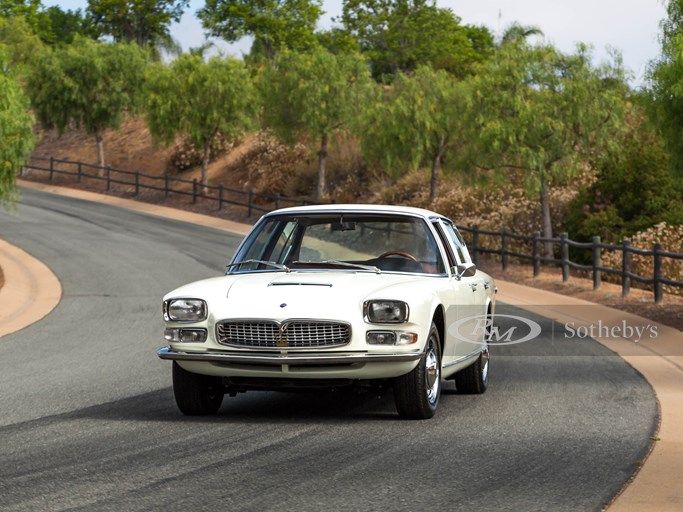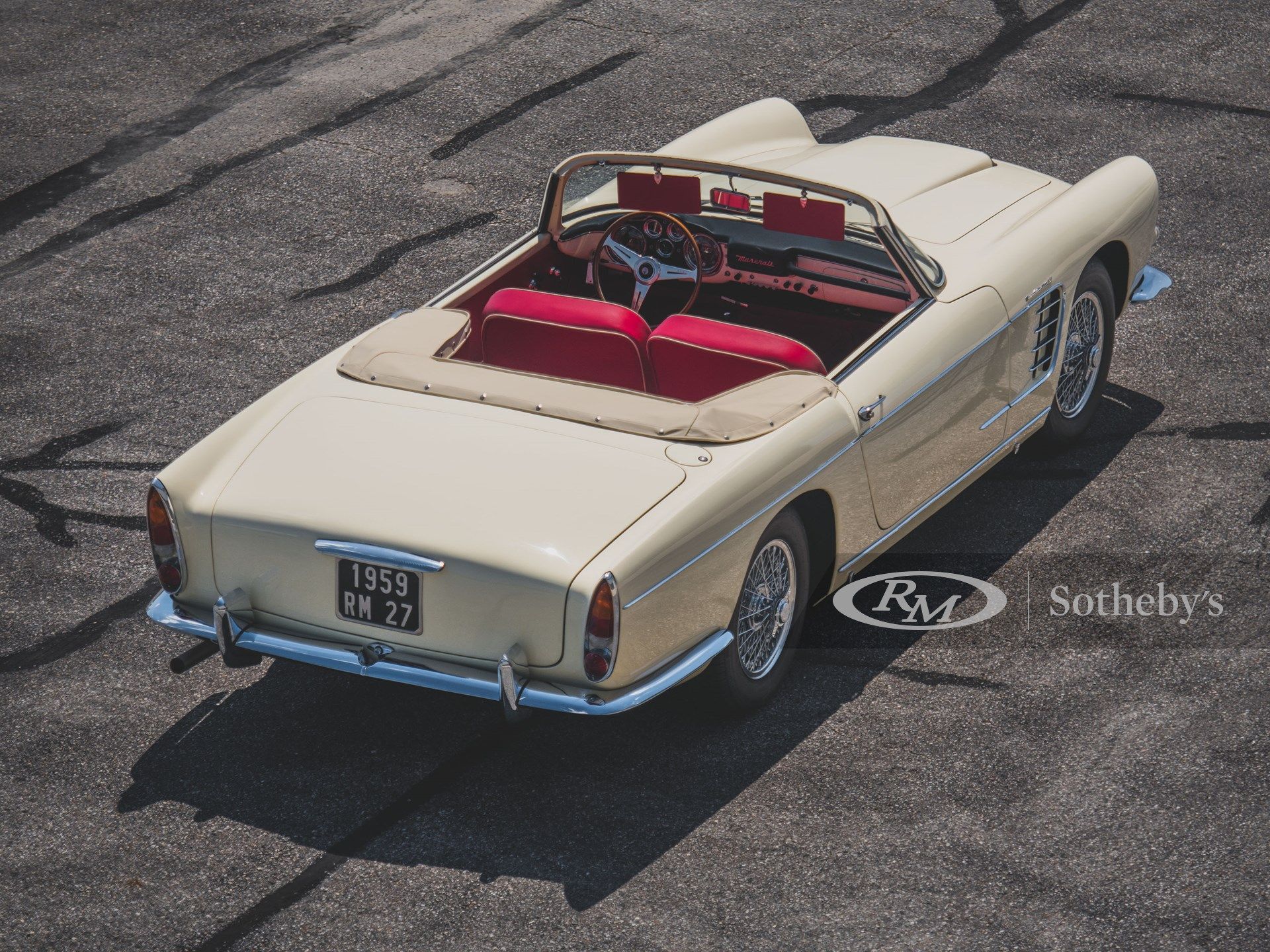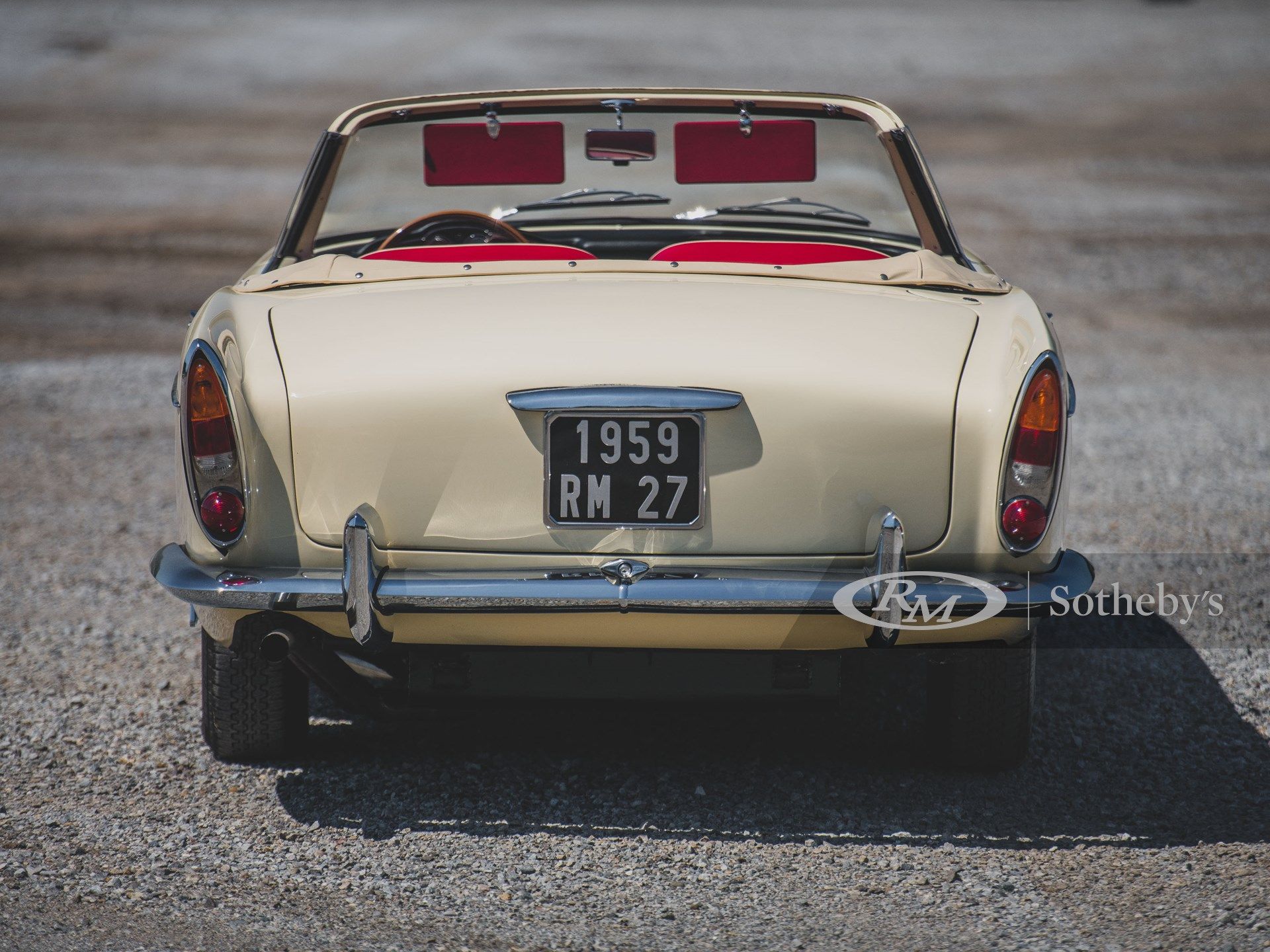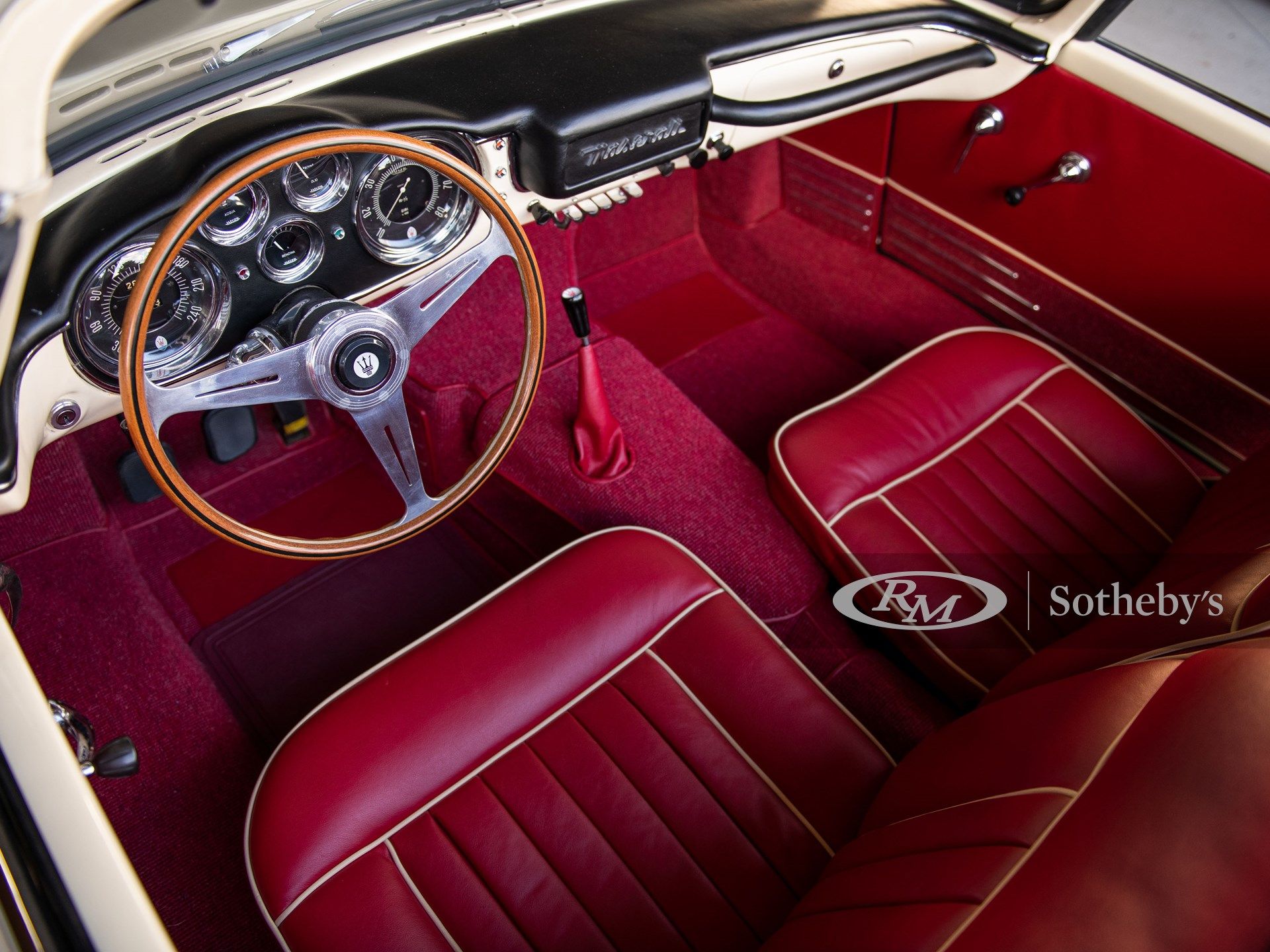The Maserati 3500 GT is, arguably, Maserati's first stab at building a mass-market grand tourer that could challenge both Ferrari as well as its British peers. Many coachbuilders submitted designs to Maserati before the 3500 GT was put into series production and Pietro Frua came forth with proposals for both a fixed-head coupe as well as a convertible.
This very car was his idea of a topless 3500 GT and it is unique because, as it happened, Maserati chose Vignale's design instead. The car is back on the auction block after previously being among the headliners at Monterey in 2017.
If you crash this one, good luck finding replacement parts
The '50s was a great decade for Maserati, in spite of its financial ups and downs. The glorious 250 F helped Juan Manuel Fangio win two F1 World Drivers' titles and then there were the 300S and the 450S sports cars that proved very capable indeed against Jaguar's D-Type and Aston Martin's DBR1.
Giulio Alfieri, Maserati's Chief Engineer and one of the Alfieri brothers that'd established Maserati before the War, was busy working on the racing engines for the company's sports cars when he figured that a bigger inline-six engine could be used in a production GT car. The prospect was buoyed by Maserati's first few road cars that, despite being made in a very limited quantity, proved that there was a business model away from selling race cars.
However, in true Maserati style, the engine that would ultimately end up under the hood of the 3500 GT was derived from a racing unit, namely the 3.5-liter, DOHC, long-stroke inline-six fitted to the 350S.
That figure was well into Ferrari territory as Maranello's 250 GTE 2+2 developed 232 horsepower from its Colombo-designed, three-liter SOHC V-12.
So, with the performance being in the ballpark of what Ferrari was capable of in those days, Maserati then started to think about how the car would look like. While busy preparing the 250 F single-seaters that were competing in F1, the company sent out a number of rolling chassis and drivetrains to selected coachbuilders that were supposed to then build their interpretation of a 3500 GT and submit it back to the company.
In fact, when the model debuted, at the March 1957 Geneva Auto Show, Maserati exhibited two examples, one featuring a Touring body (built using the patented Superleggera technique) and also a model bodied by Carrozzeria Allemano. While Touring's proposal was the one that went into series production, Carlo Felice Bianchi Anderloni's interpretation of a drop-head 3500 GT wasn't as well received by Maserati's Omar Orsi and the rest of the company's top brass.
As such, Touring only worked on the coupe bodies while Vignale and Frua also submitted proposals to build the convertible. Giovanni Michelotti's design eventually won over Pietro Frua's creation and, to add insult to injury, neither this convertible nor one of Frua's coupes featured prominently at an auto show in period whereas design studies by Bertone (penned by Franco Scaglione), Moretti, or Boneschi all turned heads at either the Turin Auto Show or at the Geneva Auto Show.
Styled to maybe appeal more to the North American clientele, Frua's convertible 3500 GT featured oversized bumper overriders in the front, scooped fenders, square-ish flanks with chrome accents and that unmistakable caved-in section along the doors right aft of the front wheel well marked by a curved chromed line. The vertical and slightly angled taillights seem more Aston Martin than Maserati but they fit within the car's fins that rather suggest the direction Frua would take when designing the 5000 GT, a job he did get.
Upon completion in early 1959, the car was tested by both Maserati's Chief Mechanic and test driver Bertocchi and famed German automotive journalist and part-time racer Richard von Frankenberg on the Modena Motodromo. Thereafter, the car ended up on a showroom floor in Paris where it was spotted by someone in the production team of the movie 'La Francaise et l’amour - Love and the French Woman.' The Maserati subsequently made an appearance in a scene in that motion picture before passing on to its first owner, all in 1960.
The process is completed by the Maserati's third known owner who had it painted in pastel yellow over a turquoise and white leather interior. Since then, the car passed through a couple of other sessions in the body shop and, on top of that, the cabin was re-upholstered.
The result of all the work was that its current owner tackled the Colorado Grand rally for historic and classic cars effortlessly with the car driving without a fuss despite there being a full trunk of luggage in the back and three or even four passengers inside during the event.
The current owner bought the car in 2017 during the RM/Sotheby's Monterey sale and paid $605,000 for it. Now, three years down the road, the same auction house hopes the car will fetch between $700,000 and $1,000,000. We don't yet know if they're off the mark or not but the auction's clock runs out on August 14 so you better act now if you want this unique piece of Maserati history.
Check out RM Sotheby's listing page, and move quick this specific vehicle has a current bid of $400,000 as of the time of this writing (just shy of the asking price of $405,000) and bidding ends on Friday, August 14, 2020




